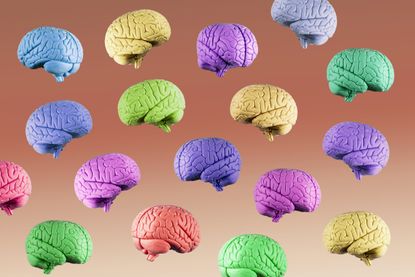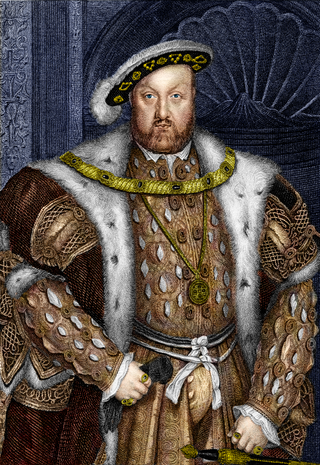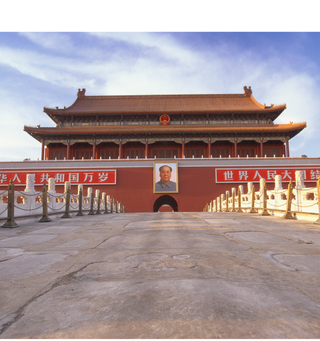The Mandela Effect - why your memories may be false
If you have memories of an event that appear to differ to the actual occurrence, you may be experiencing the Mandela Effect.


If you have memories of an event that appear to differ to the actual occurrence, you may be experiencing the Mandela Effect.
What is the Mandela Effect?
It’s a term used to describe the phenomena of when a group of people mis-remember an event or detail. The name derives from the large amount of people seem to ‘remember’ former South African president Nelson Mandela dying during his imprisonment on Robben Island in the 1980s. But ctually, he died in 2013.
The Mandela Effect is used to describe instances when people have a clear memory of an event or detail happening one way, when, in actual fact, that memory has no basis in fact – in this reality, anyway…
Here are some of the most popular misremembered memories, according to the site mandelaeffect.com.

Memories…
- Do you recall a portrait of Henry VIII holding a turkey leg? Lots of people remember seeing a classic portrait of the infamous king clutching a turkey leg. They are convinced they’d been shown it in history class. But, try searching for the image…
- Mother Teresa, who died in 1997, was believed by many to have been beatified – which is to proclaim a deceased person to be one of the blessed – in the 1990s, and not in 2003, when Pope John Paul II did the deed.
- Tiananmen Square: Many have memories of a young protester – known as ‘Tank Man’ since his identity has never been revealed – being run over by a tank after he stood in protest in Tiananmen Square, Beijing, after the massacre of civilians by Chinese troops on 4 June 1989. ‘Tank Man’ protested by bravely standing in front of a column of Chinese tanks. A lot of people remember seeing footage of the unnamed protester being run over by the tanks. But actually, he was pulled away by officials after standing his ground for several minutes.

- This certainly isn’t as dramatic as the above, but what about mis-recalling the tone of certain colours? It seems that many people remember chartreuse as being a reddish colour – when it’s actually yellow-green (and named after the alcoholic tipple of the same colour).
- In Disney’s 1937 Snow White And The Seven Dwarfs, did the Queen look into the mirror and say, ‘Mirror, mirror on the wall…’ or ‘Magic mirror on the wall…’? The Queen actually says, ‘Magic mirror on the wall, who is the fairest one of all?’
- And what about that iconic one-liner Darth Vader delivers in the 1980 film Star Wars: Episode V – The Empire Strikes Back? The Sith Lord said, ‘Luke, I am your father.’ Right? He actually said, ‘No, I am your father’ – it’s one of the most misquoted lines in movie history.
MORE: 11 ways to boost your memory today
What’s going on?
So, what sort of theories can explain the Mandela Effect? Well, they range from worries about the worldwide effects of Large Hadron Collider, the world’s most powerful particle collider – to the ‘holodeck’ theory. Or, of course, these memories could simply be what psychologists term ‘false memory’. We know which explanation sounds more fun, though!
Parallel universes
One of the more popular explanations involves parallel universes. It sounds a bit far-fetched – but it's a theory that’s supported by many physicists. It links in to the theory of Sliding – named after the American show Sliders, in which people are able to travel to other dimensions. Are some of us somehow able to ‘slide’ between parallel realities, which have tiny differences that most would not notice, without even realising it?
GoodtoKnow Newsletter
Parenting advice, hot topics, best buys and family finance tips delivered straight to your inbox.

The CERN Project
It’s been said that some scientists have been questioning the impact of the CERN project. CERN aims to ‘probe the fundamental structure of the universe’. It's also home to the Large Hadron Collider – a particle accelerator within which ‘two high-energy particle beams travel at close to the speed of light before they are made to collide.’ Some worry that such quantum science tests are able to affect the fabric of our reality…
Holodecks
And what about holodecks? Sounding like a cross between something you’d find in Star Trek or the Matrix, holodecks are, allegedly, a form of virtual reality. Think of it like the Matrix – a virtual reality computer program that we all live in and believe in, but which is actually a sham to disguise what’s really going on. ‘Glitches’ in the holodeck – indicated by compelling false memories – may be a clue that the reality we think we’re living in, isn’t really ‘reality’ at all…

Grace Walsh is a health and wellbeing writer, working across the subjects of family, relationships, and LGBT topics, as well as sleep and mental health. A digital journalist with over six years experience as a writer and editor for UK publications, Grace is currently Health Editor for womanandhome.com and has also worked with Cosmopolitan, Red, The i Paper, GoodtoKnow, and more. After graduating from the University of Warwick, she started her career writing about the complexities of sex and relationships, before combining personal hobbies with professional and writing about fitness.
-
 Instagram's latest update helps protect teen users from 'sextortion' and scammers - here are 3 key changes parents need to know about
Instagram's latest update helps protect teen users from 'sextortion' and scammers - here are 3 key changes parents need to know aboutThree new Instagram features are being introduced to help protect teens from 'sextortion scams' and encourage them to report harmful content.
By Ellie Hutchings Published
-
 Looking after grandchildren is better for the brain than Sudoku, new research suggests - adding yet another pro to the list of being grandparent
Looking after grandchildren is better for the brain than Sudoku, new research suggests - adding yet another pro to the list of being grandparentAs more grandparents take on childcare duties, it's not only parents getting something out of the deal
By Charlie Elizabeth Culverhouse Published